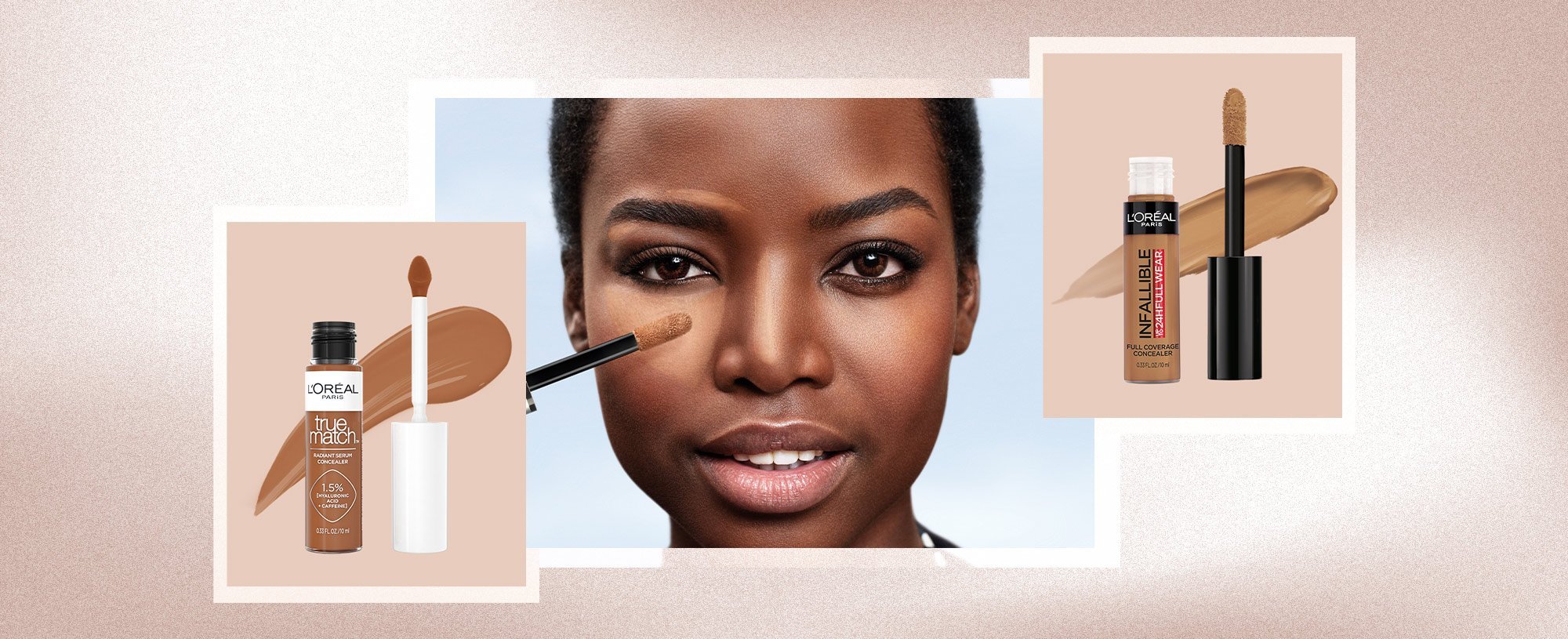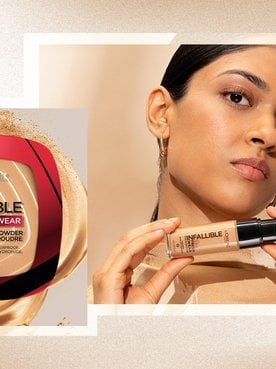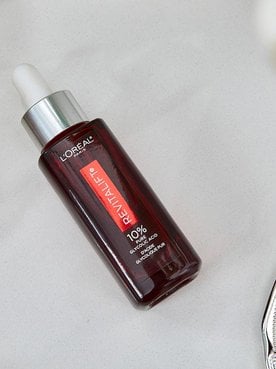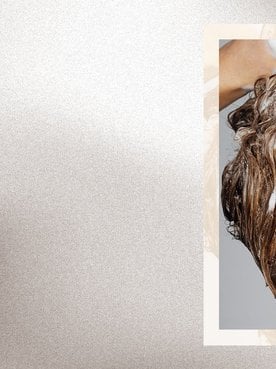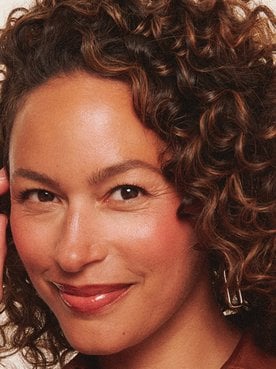When contemplating how to choose a concealer shade, it’s important to consider how you’ll use the formula in your makeup routine. These days, face concealers can do so much more than just mask imperfections. When picked wisely, the right shade can also help you neutralize discoloration, contour your features, or highlight certain areas of your face. However, knowing which color (and tone) to opt for is essential for achieving your desired results. Ahead, we share tips on how to find the right concealer shade based on your unique needs. Whether you’re searching for the best concealer for dark circles or want a full-coverage concealer for blemishes, here’s what you need to know about narrowing down your options.
How To Choose a Concealer Shade For Seamless Coverage
If achieving flawless coverage is your goal, you’ll want to color-match your face concealer to your foundation. Here are a few tips that can help you find the most seamless pairing.
1. Consider your skin’s undertones

Similar to foundation, finding the ideal concealer shade ultimately depends on your skin tone and undertone. Your skin tone refers to how much melanin you have on the surface of your skin, and it can fluctuate depending on how much sun exposure you get. Your undertones, on the other hand, are the underlying tint of your skin. It can either be cool, warm, or neutral, and unlike your skin tone, it never changes.
An easy way to determine your undertone is to flip your wrist over and look at the color of your veins inside: If they appear bluish or purple, you probably have a cool undertone. If your veins look green, you likely have a warm undertone. Seeing an equal mix of both blue and green shades, meanwhile, often indicates you have a neutral undertone. Picking a concealer with coordinating undertones usually yields the most harmonious match. For example, if you have warm skin, you’ll want to pick a warmer-toned concealer; those with cool skin should opt for a cooler concealer shade.
Once you’ve identified your undertone, it’ll be easier to narrow down your best concealer match. Many brands list their concealer shades with the letters N, W, or C to denote whether they're neutral, warm, or cool-toned. One such option is our L’Oréal Paris Radiant Serum Concealer. The collection is available in 24 skin-like shades that each specify whether they have cool, neutral, or warm undertones. The range is also designed to pair with the L’Oréal Paris True Match Super-Blendable Foundation, so you don’t have to play the guessing game in order to achieve uniform coverage.
Shop the Product
2. Examine it in different lighting
It’s easy to think a concealer is a perfect match when holding it up to your complexion in the store….until you walk outside and realize the shade match is completely off. That's why it's smart to check out your swatches in different lighting before settling on a shade. First, apply a bit of concealer (we suggest testing at least two shades) onto the areas of your face where you intend to use it. Then, examine it in your bathroom, under dim light, and in natural daylight to see how the color holds up in different conditions. While this may involve leaving and coming back to the store, you’ll feel more confident about your purchase at check-out.
3. Stock up on a few colors
As we mentioned earlier, your skin tone can change throughout the seasons, which may mean that the concealer you use in the winter doesn’t quite work when you’re spending more time in the sun (with SPF, of course). As such, it’s a good idea to have at least two shades of concealer on hand—one lighter and one slightly darker for when you have a tan (or faux tan). Just keep in mind that when going lighter or darker, the undertone of your product—cool, warm, or neutral—should always remain consistent.
Should concealer be lighter than foundation?

As we mentioned, the shade you choose for your concealer should be based on what you’re using it for. Generally speaking, it’s best to find a true match if you’re after an undetectable finish. Conversely, you may want to go one shade lighter if you’re looking for a brightening concealer or a concealer for under-eye circles. With the exception of contouring (which we’ll get into below), applying a concealer darker than your foundation will only make those areas more noticeable—which is probably opposite your goal.
How To Choose a Concealer Shade For Color Correction
Color correctors are another type of face concealer that can help disguise imperfections. Their purpose is to help neutralize discoloration before layering on your skin-like concealer or foundation. However, instead of being flesh-toned, color-correcting concealers come in bold hues like orange, green, purple, and yellow. Picking the right shade is all about color theory: As you may have learned in grade school art class, shades across from one another on the color wheel effectively cancel each other out when combined. So when choosing a color corrector, you’ll want to pick one in a hue that contrasts the discoloration you’re looking to camouflage.
For dark under-eye circles
It’s a question many of us have pondered on bleary-eyed mornings: “What color concealer should I use for dark circles?”Dark circles tend to have a bluish tint to them, and a brightening concealer alone may not provide enough coverage to effectively mask the darkness. As such, you’ll want to reach for a peach or orange color corrector to help blue-tinged circles visually recede. The former is best for those with lighter skin, while the latter is ideal for anyone with deeper complexions.
Once you’ve applied your color corrector to your under-eyes, you can blend your brightening concealer on top. Ideally, your concealer for dark circles should be one to two shades lighter than your skin tone to help further improve the look of under-eye discoloration. Our aforementioned L’Oréal Paris Radiant Serum Concealer is our favorite pick for under-eyes: The medium-coverage formula also functions as an eye serum, helping to visibly de-puff under-eye bags and neutralize the look of dark circles.
Shop the Product
For redness
Minor redness can typically be concealed with your go-to facial concealer. But if you’re experiencing widespread or prominent redness, you may want to add a green color corrector to the mix—this hue helps neutralize unwanted red tones. Keep in mind that where green color corrector is concerned, a little goes a long way. Use a light hand to help neutralize red tones, then layer your flesh-toned concealer (or foundation) on top for coverage.
If you’re prone to all-over redness, you can also opt for a primer like L'Oréal Paris Prime Lab OA Up to 24H Redness Eraser in lieu of a spot corrector. The green-tinted formula helps instantly minimize visible redness while extending makeup wear for up to 24 hours.
Shop the Product
For sallow skin
Lavender or purple color correctors are best for counteracting yellow tones in the skin, making them suitable for brightening sallow or dull complexions. Apply a few dots of purple to areas you’d like to target (commonly, the chin, forehead, or under-eyes) and blend well for a subtle brightening effect. Follow it up with a concealer that matches your natural skin tone for a seamless, imperceptible blend.
For purple discoloration
Yellow concealer should be your go-to for blue and purple areas (think broken capillaries, age spots, or violet-toned under-eye circles). Your skin tone can dictate which hue you choose: Pastel yellows work best on fair to light skin, while deep golden hues play well on those with darker complexions. The shade of concealer you apply afterward may need to be lighter or darker than the one you usually use, depending on how much the yellow color corrector stands out against your skin.
How To Choose a Concealer Shade for Highlighting and Contouring

There are two instances when it’s better for your face concealer to be a different shade than your skin: highlighting and contouring. If you’re a fan of either of these techniques, pick up L’Oréal Paris Infallible Full Wear Concealer up to 24H Full Coverage to meet all of your contouring, highlighting, and concealing needs. The extra-large applicator provides full coverage in just one stroke for a flawless matte finish that lasts all day. Plus, the creamy, waterproof formula won't transfer, fade, or crease, keeping your look locked in.
To contour with concealer, you’ll need a shade one to two shades darker than your skin tone to help you create natural-looking shadows. Sweep your concealer brush over the areas you want more definition in, such as the hollows of the cheeks, the sides of the nose, the jawline, and the temples, and blend well with a makeup sponge.
While contouring is all about adding shadow (or creating the illusion of it, anyway), highlighting is about creating light. To illuminate your features, you’ll want to reach for a concealer shade about two shades lighter than your usual formula. Use it as the finishing step in your makeup routine by applying it to the features you want to bring forward: your chin, cupid’s bow, the bridge of your nose, your brow bones, and the high points of your cheekbones. Remember that in both instances, choosing a shade that complements your skin’s undertones is key to a natural-looking finish.
Editor’s Tip: If you’re wondering how to find your concealer shade for highlighting and contouring, try to stick with a product in the same range as your regular blemish concealer. This way, you can start at your exact match and then move a few shades lighter or darker as needed.
Shop the Product
Next Up: Should You Apply Concealer or Foundation First?
Photo Courtesy of L'Oréal Paris
